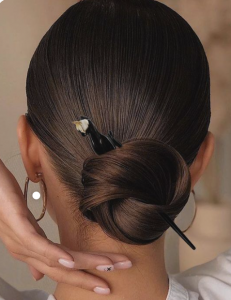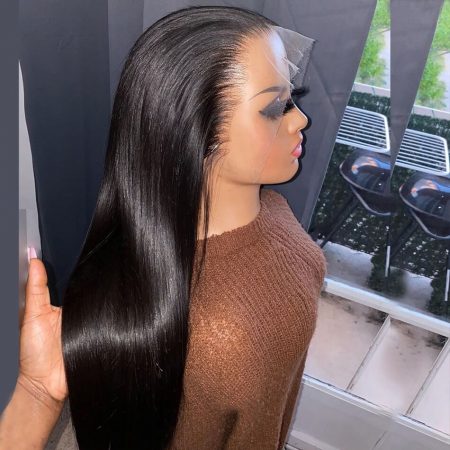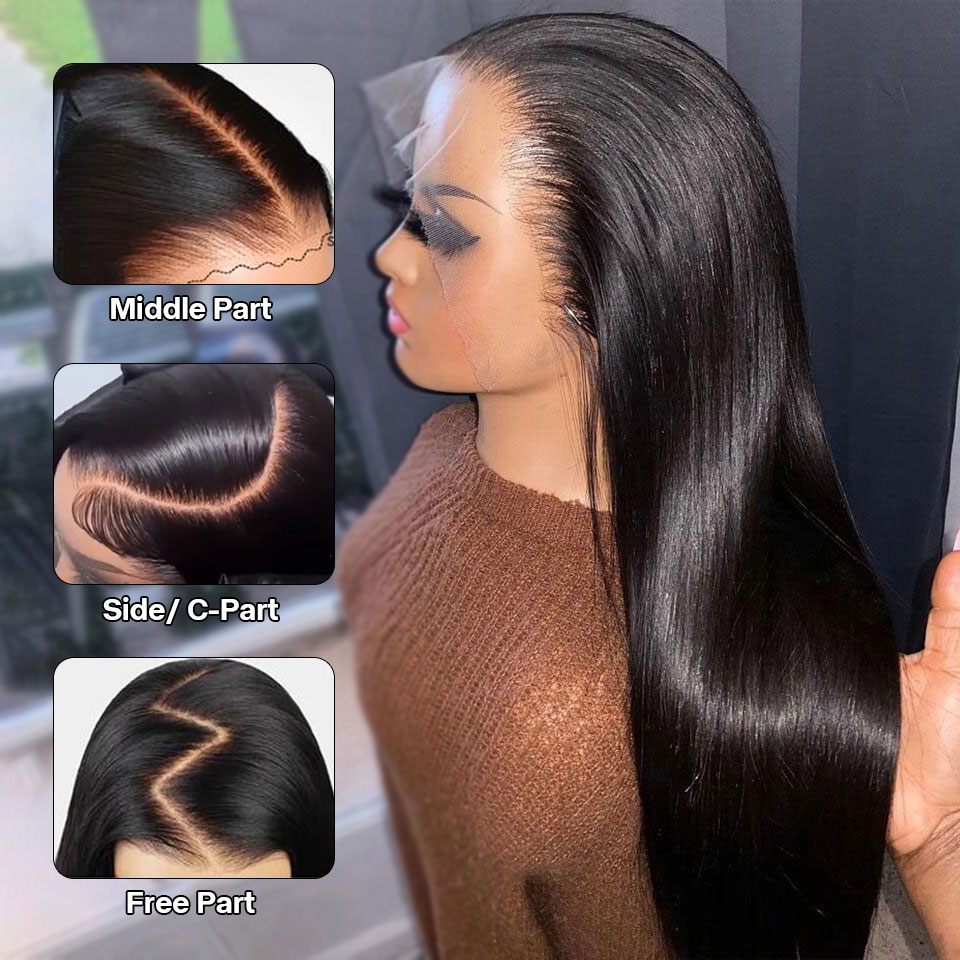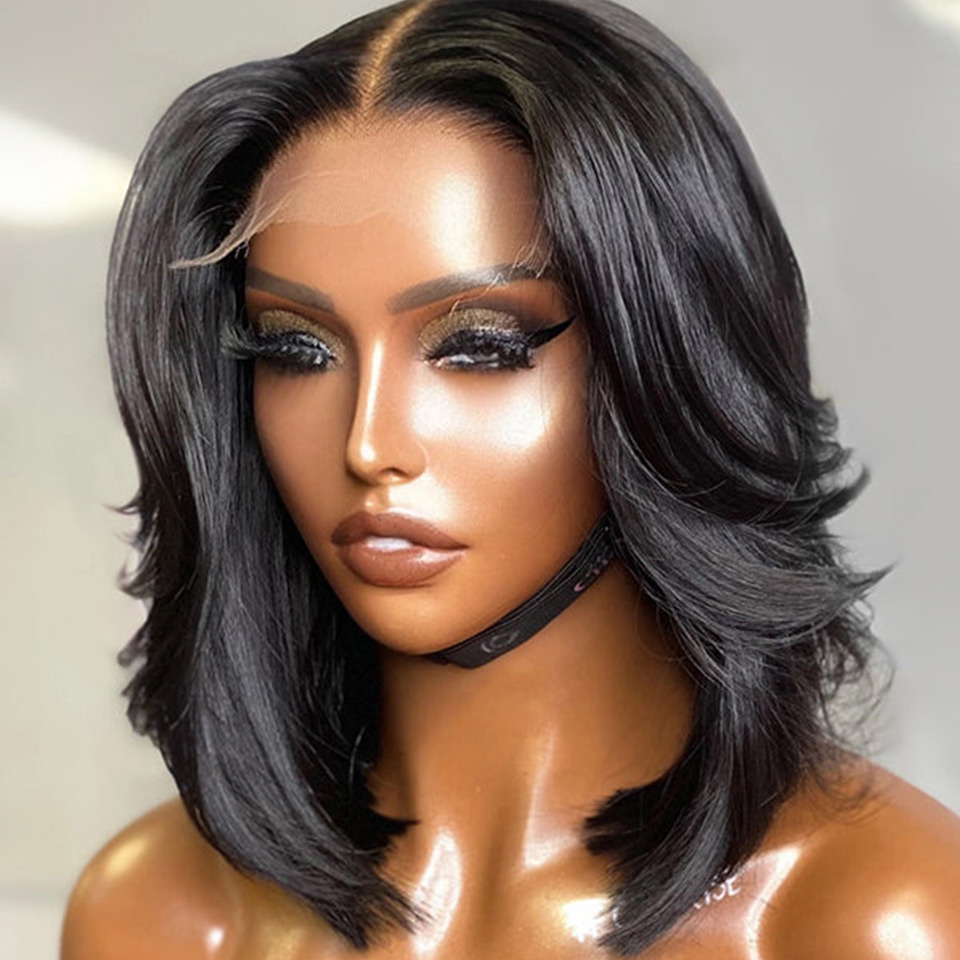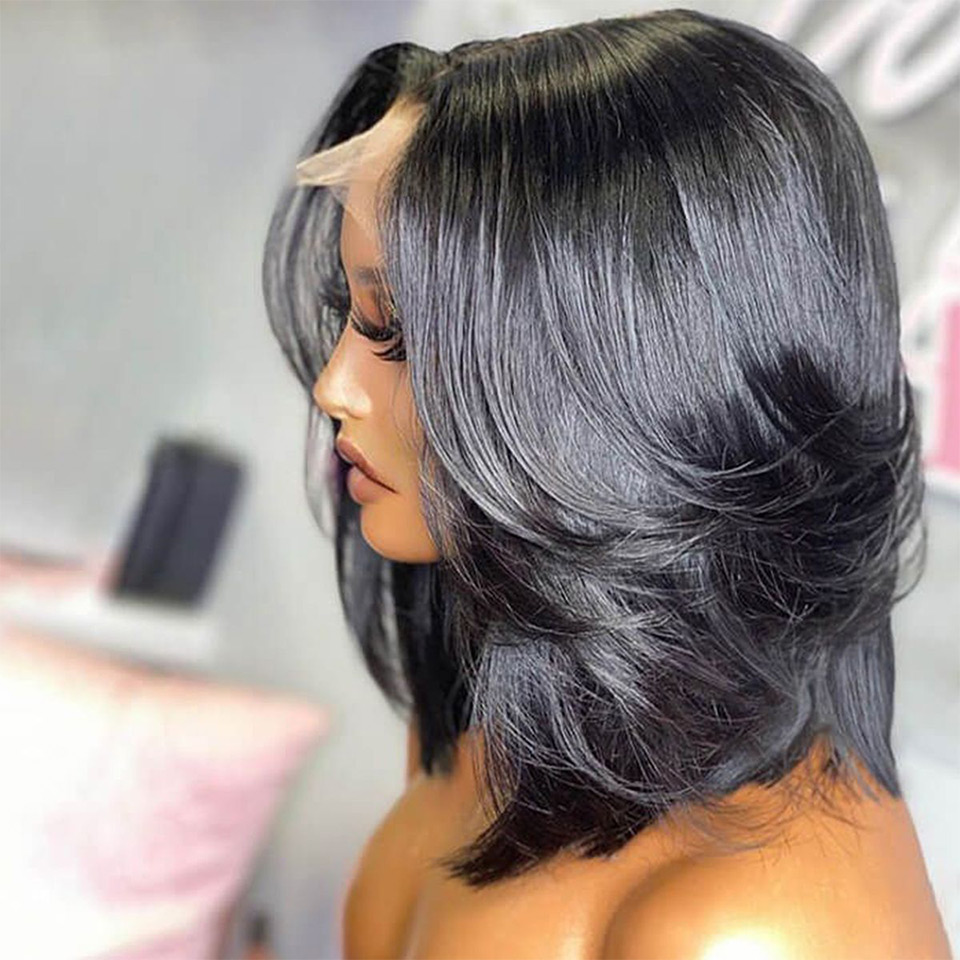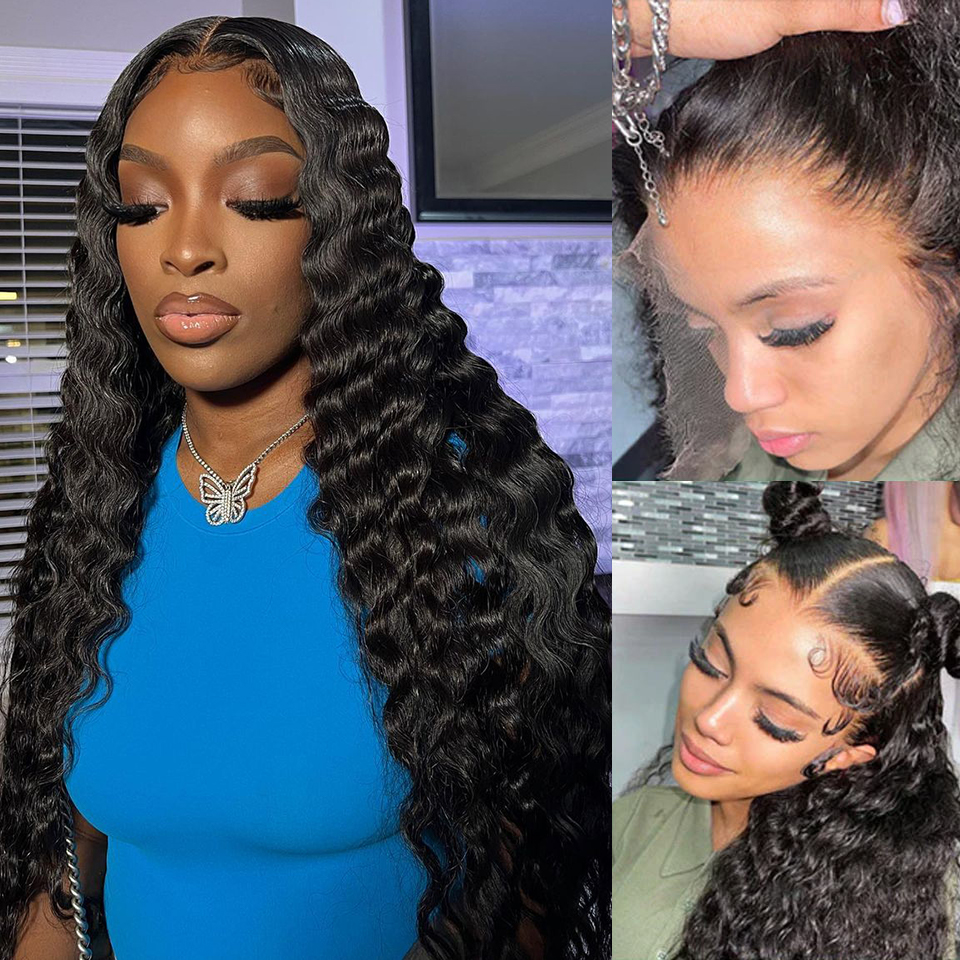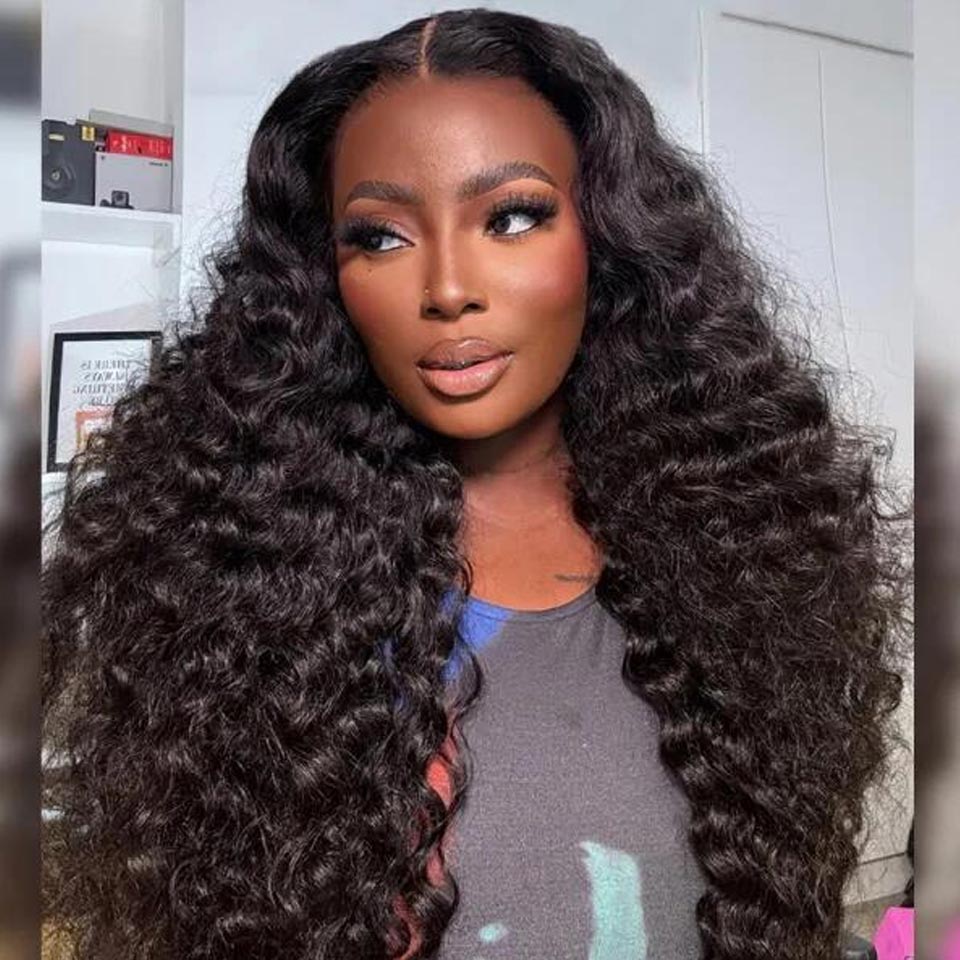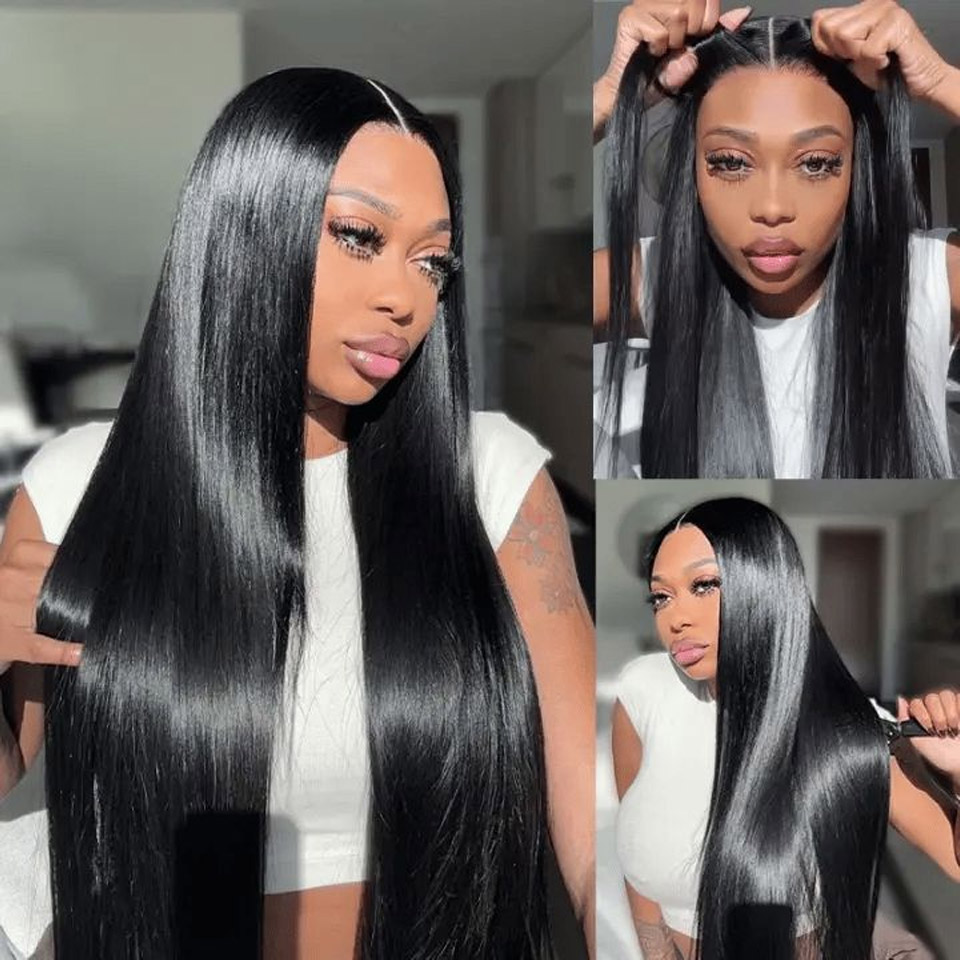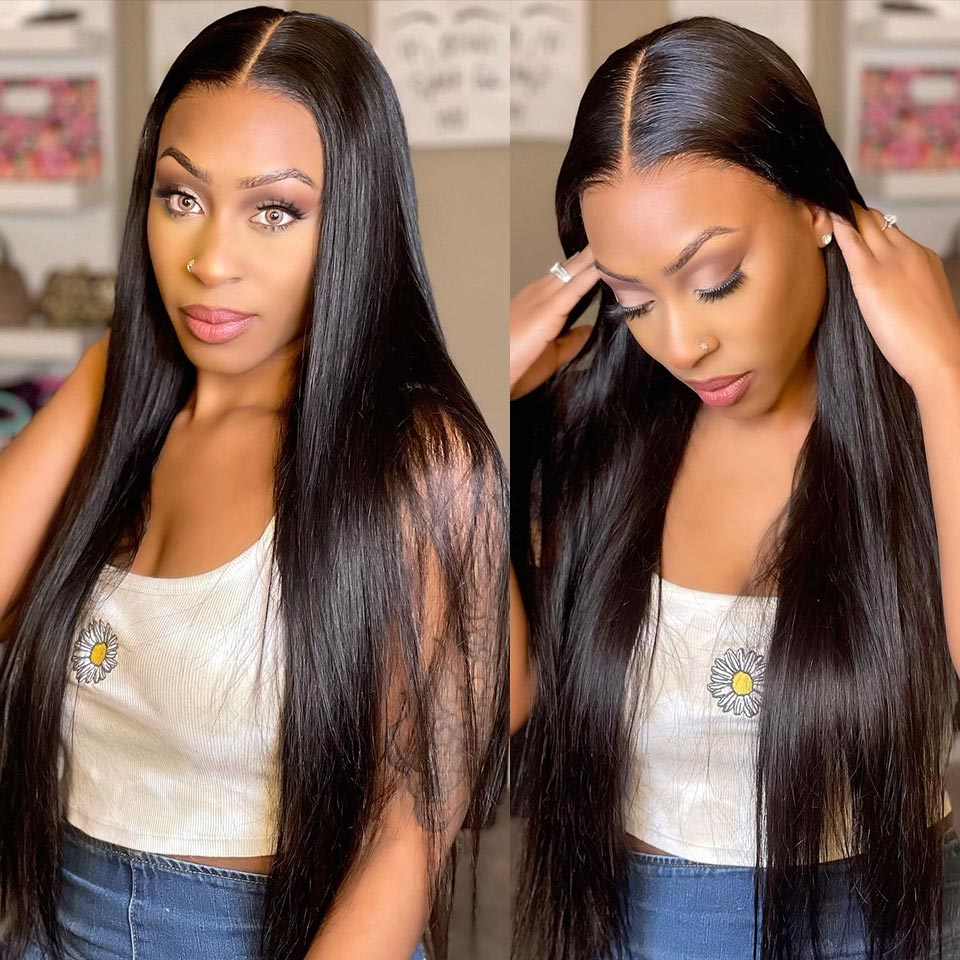Deep wave wigs have gained significant popularity due to their natural-looking texture and voluminous waves. However, to ensure your deep wave wig retains its luster and beauty over time, proper care is essential. In this comprehensive guide, we will delve into the step-by-step process of caring for your deep wave wig, from washing to styling, and everything in between.
Table of Contents.
Understanding Deep Wave Wigs.
Pre-Wash Preparations.
Washing Your Deep Wave Wig.
Conditioning and Hydrating.
Drying Techniques.
Styling Tips.
Storage and Maintenance.
Frequently Asked Questions.
Avoiding Common Mistakes.
Final Thoughts.
1. Understanding Deep Wave Wigs.
Deep wave wigs are crafted from human or synthetic hair and are designed to mimic the appearance of natural hair with waves that cascade beautifully down the strands. These waves tend to be more defined and tighter than loose waves, creating a luxurious and voluminous look. Just like natural hair, deep wave wigs require proper care to maintain their texture and longevity.
2. Pre-Wash Preparations.
Before you embark on the cleaning process, it’s important to gather the necessary tools and products:
Wide-tooth comb.
Spray bottle.
Shampoo and conditioner (sulfate-free)
Deep conditioning treatment.
Mild detangling brush.
Towel.
Wig stand or mannequin head.
3. Washing Your Deep Wave Wig.
Step 1: Detangle Gently.
Using a wide-tooth comb, gently detangle the wig, starting from the tips and gradually working your way up to the roots. Take your time to avoid unnecessary pulling or tugging, which can damage the waves.
Step 2: Prepare the Wig.
Place the wig on a wig stand or mannequin head. To prevent tangling during the washing process, secure the hair with clips or elastic bands, keeping the strands neat and organized.
Step 3: Pre-Wash Treatment.
Fill a spray bottle with lukewarm water and a small amount of conditioner. Lightly spritz the wig to moisten the hair, making it easier to distribute the shampoo later.
Step 4: Shampooing.
Dilute sulfate-free shampoo with water in a separate container. Gently pour the shampoo mixture over the wig, focusing on the roots while avoiding vigorous rubbing. Use your fingers to distribute the shampoo through the hair, but refrain from rubbing or bunching the hair together, as this can cause tangling.
Step 5: Rinse Thoroughly.
Rinse the wig under lukewarm water until all shampoo residue is removed. Gently squeeze the hair to encourage excess water to drain.
4. Conditioning and Hydrating.
Step 1: Apply Conditioner.
Dilute your sulfate-free conditioner with water and apply it evenly through the hair, avoiding the roots. Focus on the mid-lengths and ends, where the hair is most prone to dryness and damage.
Step 2: Deep Conditioning.
For a more intensive treatment, consider using a deep conditioner. Apply the deep conditioner to the hair, focusing on the ends. You can also cover the wig with a plastic cap and apply heat to enhance the conditioning process. Follow the product instructions for timing.
Step 3: Rinse and Pat Dry.
Thoroughly rinse the conditioner out of the wig with lukewarm water. Gently squeeze the hair to remove excess water, then pat it dry with a soft towel.
5. Drying Techniques.
Step 1: Air Drying.
Place the wig on a wig stand or mannequin head and allow it to air dry. Avoid direct sunlight and excessive heat, as they can damage the hair fibers and affect the wave pattern. If you need to speed up the drying process, use a cool setting on a blow dryer.
Step 2: Avoid Manipulation.
While the wig is drying, refrain from touching or combing the hair. This will help the waves maintain their shape and prevent frizz.
6. Styling Tips.
Step 1: Define the Waves.
Once the wig is completely dry, use a wide-tooth comb or your fingers to gently define the waves. Start from the tips and work your way up to the roots.
Step 2: Heat Styling.
If you want to change up your look, you can use heat styling tools on your deep wave wig. However, be cautious and use a heat protectant spray to shield the hair from excessive heat. Opt for low to medium heat settings to prevent damage.

Step 3: Avoid Overstyling.
While styling can be fun, overstyling your wig can lead to wear and tear. Alternate between different hairstyles and avoid using heat tools too frequently.
7. Storage and Maintenance.
Step 1: Detangle and Store.
Before storing your wig, ensure it is detangled using a mild detangling brush. Store it on a wig stand or mannequin head to maintain its shape and prevent tangling.
Step 2: Protect from Dust and Friction.
Cover the wig with a silk or satin scarf to protect it from dust and friction, which can cause tangling and frizz.
Step 3: Avoid Prolonged Use.
To prolong the life of your deep wave wig, avoid wearing it for extended periods. Allow your natural hair and scalp to breathe between uses.
8. Frequently Asked Questions.
Q1: How often should I wash my deep wave wig?
A: On average, washing your deep wave wig every 2-4 weeks is recommended. However, the frequency can vary depending on factors such as your lifestyle, environment, and how often you wear the wig.
Q2: Can I swim with my deep wave wig?
A: It’s best to avoid swimming with your wig, especially in chlorinated or saltwater pools, as these can damage the hair fibers and alter the wave pattern. If you do swim, ensure your wig is adequately protected or opt for a swimming cap.
Q3: Can I dye my deep wave wig?
A: While it’s possible to dye a human hair deep wave wig, it’s advisable to seek professional help to ensure the best results and minimal damage. Synthetic wigs should not be dyed, as they do not react well to hair dye.
Q4: Can I use regular hair products on my deep wave wig?
A: While some regular hair products may be suitable for use on wigs, it’s recommended to opt for sulfate-free, wig-specific shampoos, conditioners, and styling products. Regular products might contain ingredients that can strip the wig’s natural oils or cause tangling.
Q5: How do I prevent frizz in my deep wave wig?
A: To prevent frizz, avoid excessive touching or combing of the hair when it’s dry. Use a gentle touch and a wide-tooth comb when styling. Additionally, using a leave-in conditioner or anti-frizz serum can help maintain the smoothness of the waves.
Q6: Can I sleep with my deep wave wig on?
A: It’s generally recommended to remove your wig before sleeping. Sleeping with a wig on can cause friction and tangling, which may lead to hair breakage over time. If you do choose to sleep with your wig, consider using a satin or silk pillowcase or a wig-friendly sleep cap to reduce friction.
Q7: How can I restore the wave pattern if my wig loses its shape?
A: If your deep wave wig loses its pattern due to styling or wear, you can restore the waves by dampening the hair and gently reshaping the waves with your fingers. Allow the wig to air dry in the desired shape.
Q8: Can I use oil-based products on my deep wave wig?
A: It’s best to avoid heavy oil-based products, as they can weigh down the waves and cause the hair to become greasy. If you wish to add shine or moisture, opt for lightweight, water-based products or shine sprays designed for wigs.
Q9: How do I protect my deep wave wig during extreme weather conditions?
A: In humid conditions, use anti-humidity or anti-frizz products to maintain the waves. In cold and windy weather, consider wearing a hat or scarf to protect the wig from harsh elements. However, ensure that the wig is not tightly compressed under the headwear.
Q10: Can I trim or cut my deep wave wig?
A: While it’s possible to trim or cut your wig, it’s advisable to seek professional assistance to avoid uneven cuts or unintentional damage. If you’re unsure, consult a wig stylist who has experience with cutting and styling wigs.
Q11: How do I deal with shedding in my deep wave wig?
A: Some shedding is normal, especially with human hair wigs. To minimize shedding, avoid excessive pulling or tugging when detangling or styling. Use a wide-tooth comb and be gentle when handling the wig.
Q12: Can I use a flat iron or curling wand on my deep wave wig?
A: Yes, you can use heat styling tools on your deep wave wig, but it’s important to use a heat protectant spray and keep the heat at a moderate level. Excessive heat can damage the hair fibers and alter the wave pattern permanently.
9. Avoiding Common Mistakes: Deep Wave Wig Care.
Caring for a deep wave wig requires attention to detail and a delicate touch. While it’s exciting to don a wig with luxurious waves, there are several common mistakes that individuals often make when it comes to maintaining the wig’s texture, shine, and overall quality. To ensure that your deep wave wig remains as stunning as the day you bought it, let’s explore some key mistakes to avoid:
Mistake 1: Using the Wrong Products.
Using regular hair products on your deep wave wig is a recipe for disaster. Regular shampoos, conditioners, and styling products may contain harsh chemicals that can strip the hair of its natural oils or disrupt the wave pattern. Opt for sulfate-free, wig-specific products that are formulated to clean and nourish without causing damage.
Mistake 2: Overwashing the Wig.
While it’s important to keep your deep wave wig clean, overwashing can lead to dryness and tangling. Washing the wig too frequently can strip it of its natural oils, resulting in a lackluster appearance and frizzy waves. Aim to wash the wig every 2-4 weeks or as needed based on your activity level and environmental factors.
Mistake 3: Rough Detangling.
Detangling your wig is a crucial step, but being too aggressive can lead to unnecessary shedding and damage. Always use a wide-tooth comb and start detangling from the tips, working your way up to the roots in gentle strokes. Avoid yanking or pulling on knots, as this can weaken the hair fibers.
Mistake 4: Skipping Heat Protectant.
Heat styling tools can be a great way to switch up your look, but failing to use a heat protectant spray can result in irreversible damage. High temperatures can weaken the hair strands, leading to frizz and a loss of the wave pattern. Always apply a heat protectant before using any heat styling tools.
Mistake 5: Improper Drying Techniques.
Proper drying techniques are crucial to maintaining the wave pattern of your deep wave wig. Avoid using high heat settings on blow dryers, as this can cause the hair to frizz or lose its texture. Instead, opt for cool settings or allow the wig to air dry on a wig stand or mannequin head.
Mistake 6: Ignoring Storage Practices.
Storing your deep wave wig haphazardly can lead to tangling, frizz, and misshapen waves. Always detangle the wig before storing it on a wig stand or mannequin head. Cover the wig with a silk or satin scarf to protect it from dust and friction, and avoid stacking heavy items on top of it.
Mistake 7: Overstyling.
While it’s tempting to experiment with different hairstyles, overstyling your deep wave wig can cause premature wear and tear. Excessive use of heat styling tools, constant manipulation, and frequent changes in style can lead to frizz, breakage, and a shorter lifespan for the wig.
Mistake 8: Neglecting Hydration.
Just like natural hair, deep wave wigs need hydration to maintain their shine and bounce. Skipping the conditioning step or using products that don’t provide enough moisture can result in dry, lackluster waves. Regularly deep condition your wig to replenish its moisture levels and enhance its overall appearance.
Mistake 9: Using Excessive Products.
Less is often more when it comes to wig care products. Using excessive amounts of shampoo, conditioner, or styling products can lead to product buildup, making the hair appear dull and weighed down. Follow the recommended product amounts and avoid overloading the wig with products.
Mistake 10: Ignoring Manufacturer Instructions.
Each deep wave wig may have specific care instructions provided by the manufacturer. Ignoring these instructions can lead to unintended consequences, including damage to the hair fibers or alterations in the wave pattern. Always refer to the manufacturer’s guidelines for the best care practices.
9. Final Thoughts.
Caring for your deep wave wig is a labor of love that rewards you with a stunning, head-turning look every time you wear it. By following the steps outlined in this guide, you can maintain the luxurious texture and volume of your wig for a long time to come. Remember, a little effort in care goes a long way in ensuring that your wig remains as fabulous as the day you first put it on. So, embrace your inner hairstylist and enjoy the versatility and beauty of your deep wave wig!







